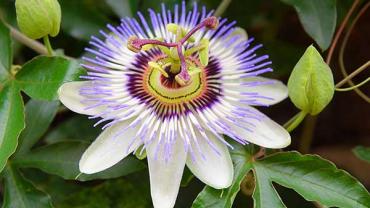
Flowers provide humans with far more than visual appeal and aromatic attractiveness. Housed deep within their beauty lies equally attractive medicinal qualities that can enhance the peace, tranquility, and well-being that their external qualities hint at.
Some of the most well-known medicinal flowers include chamomile as a calming agent, passion flower as a stress-reliever, calendula for skin conditions, black cohosh for hormone balancing, and echinacea as an immune booster. This list just barely introduces the wide array of flowering plants that can confer an equally impressive range of health benefits. In this blog, we will dissect just a few of these attractive species and the therapeutic activities they offer.
Chamomile (Matricaria chamomilla L. or Matricaria recutita)
Chamomile is a favorite and often known even among those who would consider themselves novices in the world of therapeutic botanicals. This small, yellow flower is known for its calming properties that make it useful for anxiety disorders, insomnia, or as a general stress-reducer.
Anxiety is a rising problem in our fast-paced society. Generalized anxiety disorder (GAD) is the most common form of anxiety, characterized by excessive worry, poor concentration, restlessness, muscle tension, irritability, fatigue, and sleep difficulties that have occurred for at least six months. Unfortunately, pharmaceutical drugs are commonly prescribed for this condition, but they bring with them undesirable side effects. In an open-label phase of a two-phase randomized controlled trial of chamomile versus placebo for relapse-prevention of recurrent GAD, 179 subjects with moderate to severe GAD received 1,500 mg/day of pharmaceutical-grade chamomile extract for up to 8 weeks. A clinically meaningful response was seen in 58.1 percent of subjects and included at least a 50 percent reduction in GAD-7 symptom scores within 2 weeks of initiating treatment.
The exact mechanism by which chamomile and its constituents reduce anxiety is not well understood, but it has been suggested that chamomile affects γ-amino butyric acid (GABA), noradrenalin (NA), dopamine (DA), and serotonin neurotransmission, or modulates the hypothalamic-pituitary-adrenocortical axis function.
In support of the latter theory, another randomized controlled trial of 45 subjects with DSM-IV diagnosed GAD was used to assess salivary cortisol for three days each pre- and post-treatment with chamomile, at 8am, 12pm, 4pm, and 8pm. These changes were then evaluated in relation to symptom changes. It was found that improvements in symptoms were significantly associated with pre-to-post treatment changes in cortisol. Greater increases in morning cortisol and greater decreases in cortisol from morning to the rest of the day led to greater improvements in symptoms. These patterns were linked to treatment with chamomile, suggesting that constituents in chamomile positively affect cortisol levels, which can reduce symptoms of GAD.
Passion Flower (Passiflora sp.)
Passion flower is a close cousin to chamomile and they share many of the same medicinal qualities, helping to relieve stress, anxiety, improve mood, and encourage sleep. Passion flower was found to reduce preoperative anxiety without affecting muscle relaxation and sedation in patients receiving ambulatory surgery. In a study of adults diagnosed with “nervous restlessness,” a dried ethanolic extract of passion flower was given for 12 weeks and resulted in significant improvements in patients' resilience scores and quality of life. Inner restlessness, sleep disturbance, exhaustion, fear, lack of concentration, transpiration, nausea, trembling, and palpitation were characteristics used to measure the outcomes of resilience and quality of life.
Flower Pollen Extract (Secale cereale L.)
The medicinal properties of flowers are not just limited to their visual components, but their pollen may also confer health-promoting constituents. For example, flower pollen extract has been shown to be beneficial in managing chronic prostatitis (CP) and chronic pelvic pain (CPP) syndrome – one of the most common conditions in men under the age of 50 years. In a systematic review and meta-analysis of both pre-clinical and clinical trials on the role of flower pollen extract in CP/CPPS, it was found that the botanical intervention significantly improved patients’ quality of life scores. Quality of life measurements focused on common symptoms of CP/CPP, including pelvic pain, painful voiding and ejaculation, and disturbed sexual functioning.
The power of flower pollen to improve the symptoms of CP/CPP is rooted in its anti-inflammatory and anti-proliferative properties. Rye pollen (Secale cereal) has been shown to inhibit the synthesis of prostaglandin and leukotriene which results in an anticongestive and anti-inflammatory effect on the prostate tissue.
Chamomile, passion flower, and flower pollen extract provide only a few examples of the numerous types of flowers that possess therapeutic properties, as well as the various health benefits that can be obtained from either a single flower or a combination of medicinal flowers. So as the rain of April encourages the sprouting of numerous botanicals, let’s consider that the beauty revealed is more than skin deep…. or petal deep in our case.